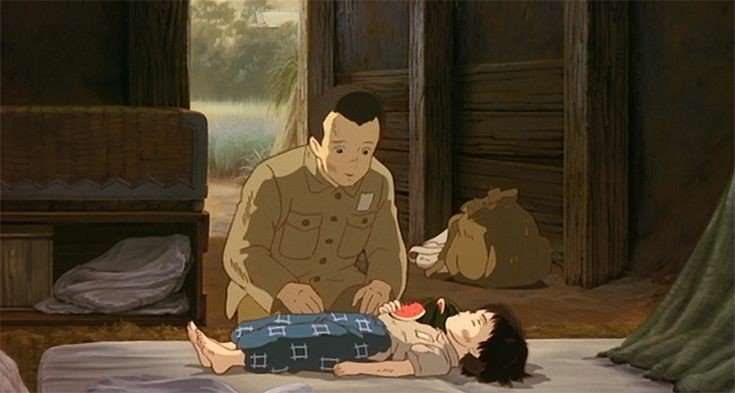Based on the 1967 semi-autobiographical novel of the same name by Akiyuki Nosaka, Grave Of The Fireflies is an animated film that shows the tragic consequences of World War II in Japan. The movie provides an emotional experience to the viewers that it is impossible not to shed a single tear by the end of it.
Studio Ghibli is well known for its excellent animation thus delivering us another masterpiece. The movie is rich with detail and mindblowing effects. Grave of the Fireflies received critical acclaim and has been proclaimed as one of the greatest war films ever made.
What is the anime about?

Grave of the Fireflies (1988) is set in Kobe in 1945, and tells the story of two siblings, Seita and Setsuko, made homeless by the bombs. Their father is serving in the Japanese navy while their mother is a bomb victim.
The film tells a simple story of survival during the wartime. The boy is a young teenager and his sister is about five, he tries to become the responsible guardian for his small sister. One time, they move in with a distant aunt, however relatives are not kind during their trying times.
Eventually, they move out of the house and stay in an abandoned bomb shelter. With no food to eat, Setsuko falls gravely ill and dies. After few weeks, Seita too, succumbs to starvation and dies.
Why should you watch this movie?

The film covers a tough topic that shows the devastation left behind by the war. The sadness in this film does leave us heavy hearted, but it reminds us to appreciate what we have while we have it.
In the film, the effects of war are depicted properly. The ravages caused by it are endless and no one knows when it will end. We also get to see the love the two siblings greatly shares with one another. They fight through hardships together, which emphasizes the value of love.
More importantly, ‘it’ really happened. The war wiped off cities and many lives. Akiyuki Nosaka lived through the bombing of Kobe when he was a child. The film needs more recognition and hopes that it gets the attention it deserves.





